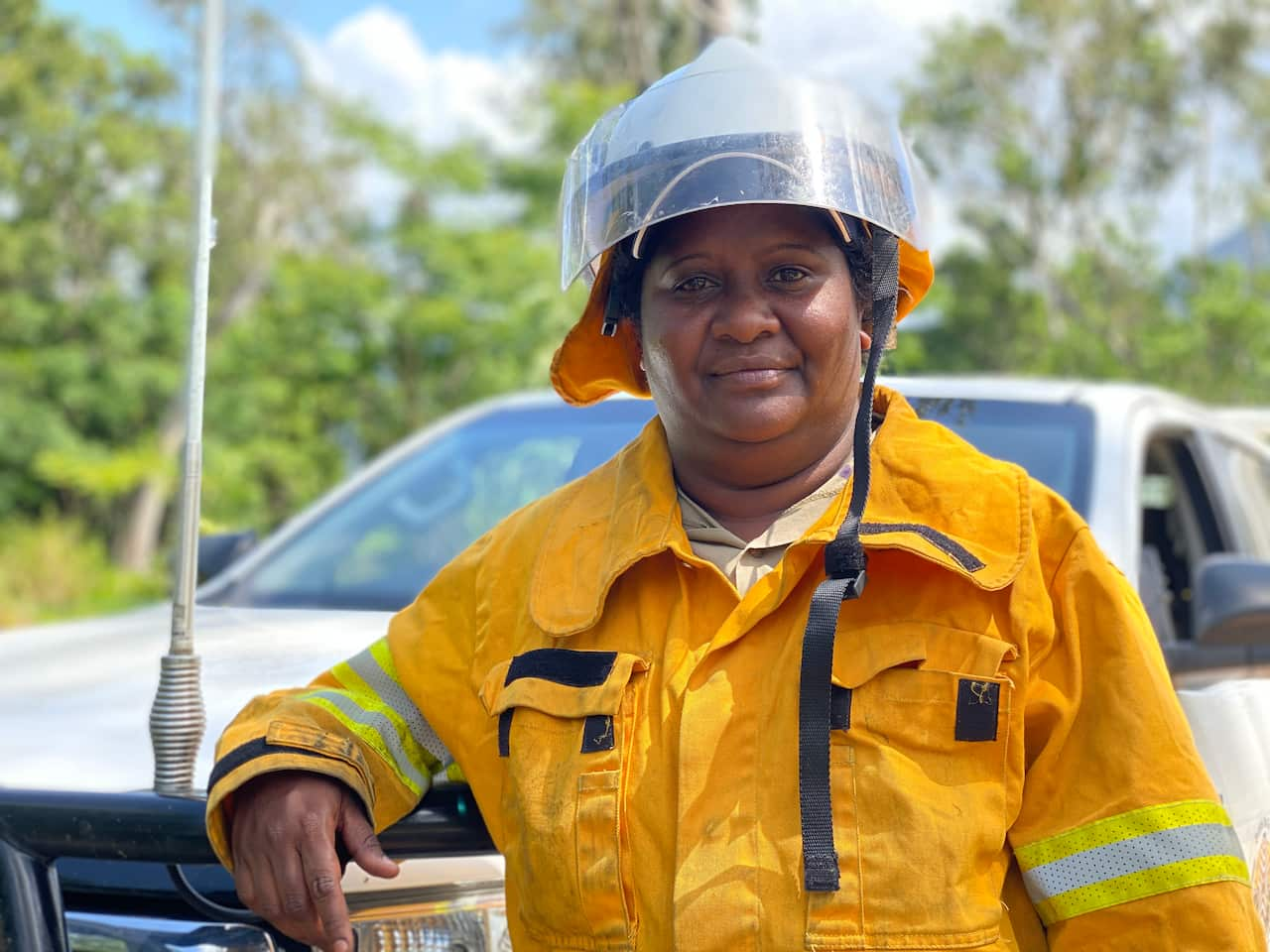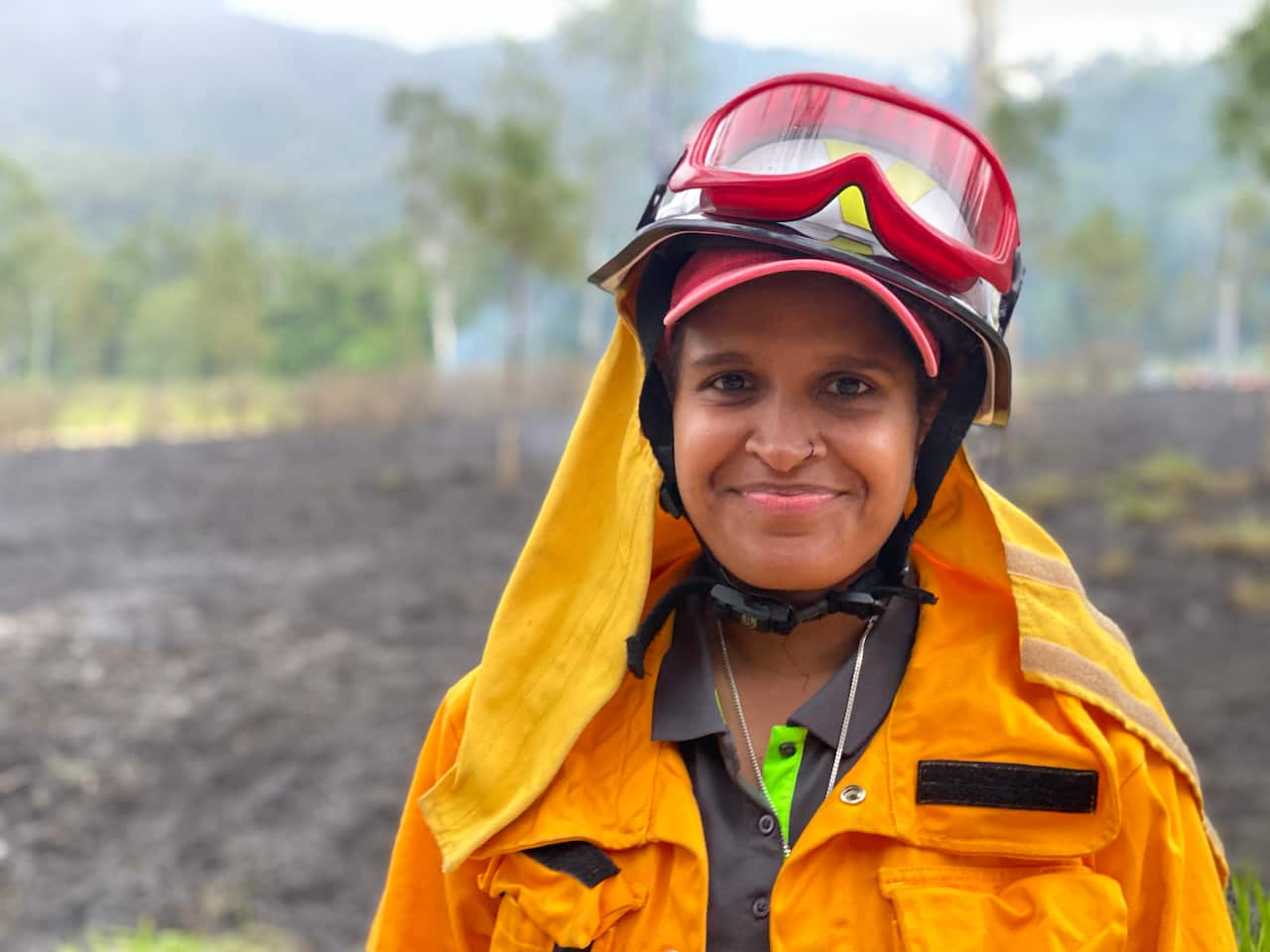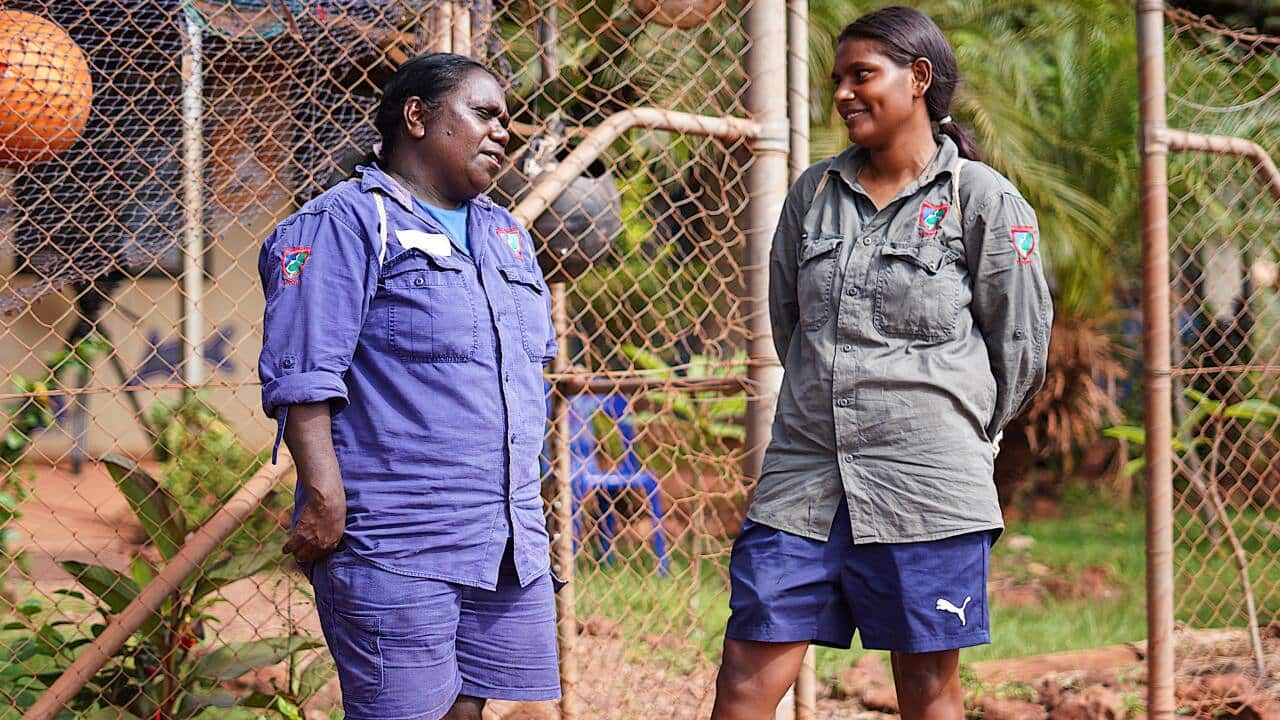Queensland’s first all-women Aboriginal ranger crew are carrying out a cool burn in the state’s tropical far north when the flames are suddenly stoked by a gust of wind.
A quick discussion over a two-way radio and a split-second decision to put the fire out show their training in action.
“If you have to put it out, put it out.” … “I think we’re going to have to, ‘cause it’s too hot.”
The crew are part of the Girringun Aboriginal Corporation rangers, based in the coastal town of Cardwell, and have been taking on the unconventional roles of conducting cool burns across the region. Cool burning - also referred to as cultural burning - sees small, controlled blazes lit to clear the undergrowth and reduce the amount of damage a hot, wildfire can cause to the ecosystem.
Cool burning - also referred to as cultural burning - sees small, controlled blazes lit to clear the undergrowth and reduce the amount of damage a hot, wildfire can cause to the ecosystem.

The crew are part of the Girringun Aboriginal Corporation rangers Source: Stefan Armbruster/SBS News
This was their second time conducting one on Girramay Country without their male colleagues and was led by ranger coordinator Cindy-Lou Togo.
“It’s good to have that connection with country, with fire,” she tells SBS News. “It brings back the natural growth and it shows the elders that we’re trying to bring back the traditional way of burning country.” Ms Togo is from Bundjalung Country in northern New South Wales but has lived in the region for two decades, 10 of which she has worked as a ranger.
Ms Togo is from Bundjalung Country in northern New South Wales but has lived in the region for two decades, 10 of which she has worked as a ranger.

Cool burning involves lighting a small, controlled blaze. Source: Stefan Armbruster/SBS News
“It’s changed my life. I never thought I’d become a ranger but I like being outdoors and looking after country is awesome,” she says.
“It’s a bit like cleaning your house, you know. You gotta clean your house and make everything look good, so a burn is like cleaning the floor to make everything look good.”
It’s a bit like cleaning your house ... a burn is like cleaning the floor to make everything look good. - Cindy-Lou Togo, ranger coordinator
And she’s inspiring the next generation of young women rangers.
“The elders will be proud. They might have younger generations going, ‘oh yeah, well they got it, we can do it too’.”
Recognition of traditional burning practices in maintaining Australia’s landscape and its incorporation into contemporary methods isn’t just improving the health of the environment. The women have also been bringing social, cultural, and economic benefits to their people.
“It’ll give them more tickets when they get out into the world,” Ms Togo says.
“Even if they go work somewhere else, that’s fine, they’ll still have some tickets under their belt to go out into the real world from the ranger position.” Traditional Owners have also ignited the passion and love for Girramay land and culture among the new recruits.
Traditional Owners have also ignited the passion and love for Girramay land and culture among the new recruits.

Cool burning is also referred to as cultural burning. Source: Stefan Armbruster/SBS News
“Not growing up this way, I didn’t know too much about it,” ranger Olivia Mooka says.
“Within the last two-and-a-half years I feel like I’ve learnt a lot more and met a lot of family that I didn’t know about.”
Ms Mooka says the work also pays respects to generations who came before her.  “It gives the recognition to people who were here long before colonisation. You’re never going to forget what they went through, and the people who grew up back then, to make this what it is now.”
“It gives the recognition to people who were here long before colonisation. You’re never going to forget what they went through, and the people who grew up back then, to make this what it is now.”

New recruit Olivia Mooka. Source: Stefan Armbruster/SBS News
Cool burns are predominantly seen in northern Australian regions where caring for country programs allow Traditional Owners to burn according to seasonal need and cultural knowledge.
In Cardwell, the rangers are working together with environmental scientists to preserve and restore wildlife habitats. “Just five minutes after the fire itself has passed you can touch the ground with your bare hands,” says Jacqui Diggins from natural resource management company Terrain.
“Just five minutes after the fire itself has passed you can touch the ground with your bare hands,” says Jacqui Diggins from natural resource management company Terrain.

The cool burns are beneficial for the endangered mahogany glider. Source: FNTS/AAP
Here, the focus is on the endangered mahogany glider.
“Fire management is critical to saving this animal,” Ms Diggins says. “So, we’re not only working with the threatened species, but also with the Traditional Owners [to help save it].” On the edge of the rainforest, property owner Royd Blunden has also sought the skills from the women in the crew.
On the edge of the rainforest, property owner Royd Blunden has also sought the skills from the women in the crew.

Cool burns are predominantly seen in northern Australian regions. Source: Stefan Armbruster/SBS News
“It’s Indigenous knowledge which I’m very interest in,” he says. “[Asking them to help] with their traditional burning practices makes sense.”
“I think they’re doing an awesome job and good on them, they don’t need the boys.”
National NAIDOC Week (8–15 November 2020) celebrates the history, culture and achievements of Aboriginal and Torres Strait Islander peoples.
Join SBS and NITV for a full slate of . For more information about NAIDOC Week or this year’s theme, head to the .
#NAIDOC2020 #AlwaysWasAlwaysWillBe



